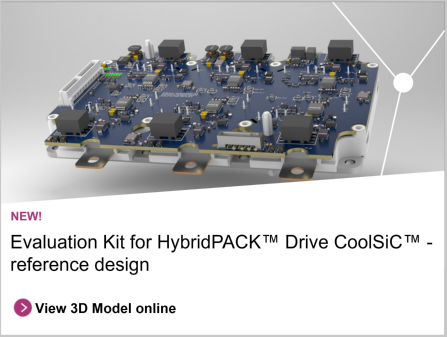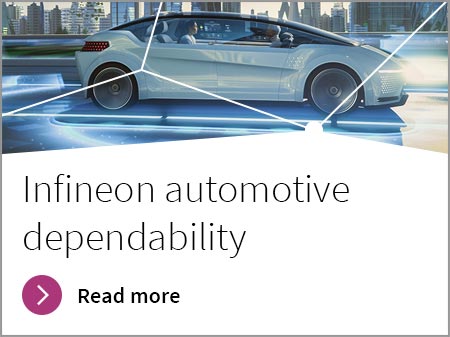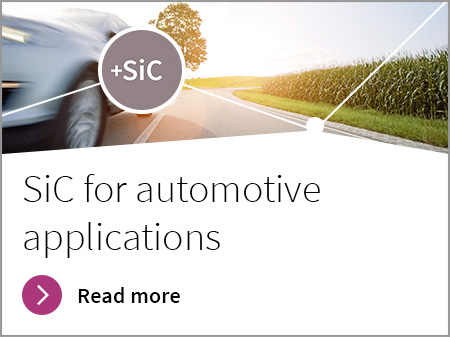EV traction inverter
Automotive-qualified and highly efficient solution supporting a scalable range of motors and power classes
The traction inverter is an essential component for electric vehicle (EV) drivetrains, as it controls the motor and determines driving behavior. It minimizes switching losses, maximizes thermal efficiency, and enables regenerative braking to recharge the battery. Infineon provides a complete system solution for traction inverter design to achieve high efficiency, optimized performance, and fast time to market.
EV traction inverter system diagram
Powerful and efficient traction inverters for electric vehicles
The traction inverter plays an essential role in determining the vehicle's performance and efficiency. It regulates the motor's speed and torque, facilitates regenerative braking to recharge the battery, and ensures optimal power delivery. Advanced traction inverters prioritize high efficiency, low switching losses, and thermal management to enhance the overall system performance and extend the vehicle's driving range. Infineon offers a highly scalable and automotive-qualified system solution to meet the requirements of EV inverters, allowing efficiency, fast time to market, and optimized performance.
Drive innovation forward with cutting-edge traction inverter portfolio
- Fully automotive-qualified product portfolio supporting wide range of motors, generators, and power classes
- Highly efficient 3-phase drive, thanks to very low conducting losses even at high switching frequencies
- Isolation-integrated in gate driver
- Wide range of 32-bit microcontroller solutions dedicated to (H)EV applications with a highly cost-effective resolver interface
- Evaluation kit available to reduce system on development time
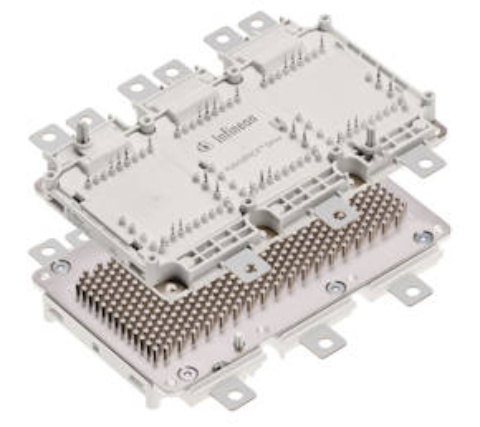
Technology choice (Si and SiC) in traction inverter systems
SiC-based power electronics for EV traction inverters are accelerating rapidly. Given the WLTP mission profile, where partial load dominates, SiC demonstrates an efficiency gain of approximately 4% over its silicon counterpart. It is our belief that Si and SiC will co-exist as both have their unique benefits. A Si/SiC hybrid solution is often considered for traction & secondary inverters, i. e. SiC is applied for rear-wheel drive, aiming to extend the range, whereas silicon is used in front-wheel drive to allow cost optimization.
Learn more about our products:
- Silicon Carbide CoolSiC™ MOSFETs portfolio
- Trench based HybridPACK™ Drive CoolSiCTM G2 module FS0xMR08AxMA2XX
- EiceDRIVER™ SiC MOSFET Gate Driver ICs
- 3rd generation EiceDRIVER™ 1EDI3035AS optimized for CoolSiCTM
- 32-bit AURIX™ microcontrollers based on TriCore™
- OPTIREG™ PMICs (Automotive) - integrated, multi-rail power supply solutions
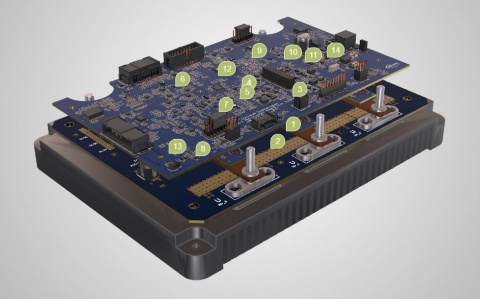
This reference kit provides users the ease of development for 48 V inverter control targeted for electric scooters and motorcycle traction motors. This kit is designed to drive a Permanent Magnet Synchronous Motor (PMSM) and Brushless DC Motor (BLDC). Its excellent thermal performance is supported by topside-cooled 80 V MOSFETs coming in the TOLT package with Infineon’s leading OptiMOS™ 5 technology. Furthermore, this new reference kit is the ideal solution for rapid prototyping while minimizing R&D efforts and time to market.
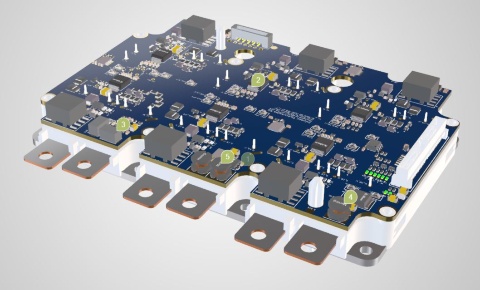
Evaluation kit for fast design-in based on HybridPACK™ Drive CoolSiC™
- HybridPACK™ Drive CoolSiC™ G2, sintered, ceramic, direct cooling and on-chip temperature sensing
- Gate driver board with EiceDRIVER™ G3
- Logic board with AURIX™ MCU
- Communication and development interface: CAN, USB, DAP
- Software supports flexible operational modes
- One-eye GUI interface enabling full customization
- Current sensor vertically integrated into the busbar for optimized space and cost
- Aluminum cooler in reference design, plastic cooler as optional
- DC link capacitor
Download our free whitepaper: Traction inverters are a key application for electrified vehicle designs
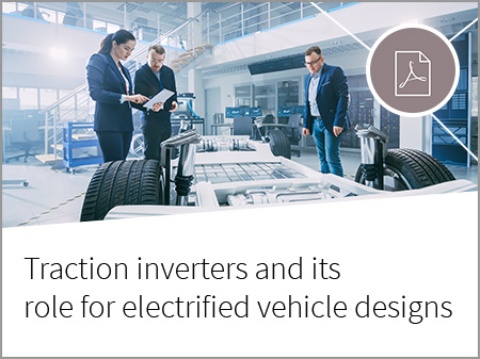
In this technical white paper, we will look at the role of traction inverters and how they are evolving within the changing landscape of electric vehicles. We will also consider new semiconductor technologies that are driving advanced development and many of the challenges that need to be considered when designing traction inverters.
Download now
Online Courses
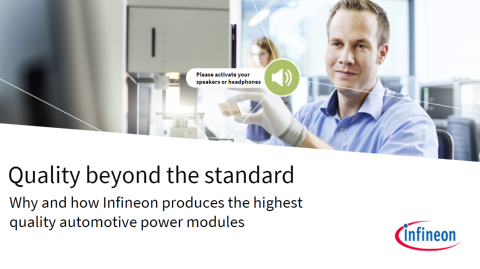
- Understand Infineon’s purpose in delivering quality above and beyond the standard and find out how we execute that standard in development, qualification, manufacturing and testing
- Learn where and how this high-quality standard is reflected and discover our success stories
With the growing market of electrical vehicles, the industry has put forward more requirements for the performance of charging piles. This e-learning will show you that the emergence of CoolSiC™ MOSFETs has improved the charging pile industry to make the EV charger smaller, faster and with higher efficiency.
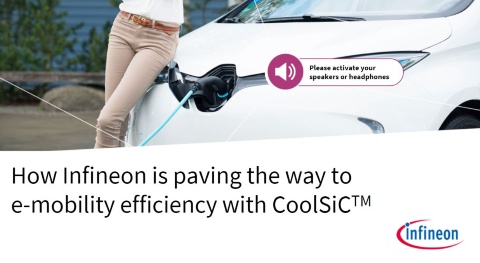
- Distinguish the features and benefits of Infineon’s CoolSiC™ solutions in target applications and identify Infineon’s fully scalable CoolSiC™ portfolio to meet this automotive market transition
- Explain the reasons for the increasing introduction of silicon carbide technology in the automotive applications
This training covers the harmonized frame of standards from international bodies like ISO, IEC, SAE and UL dedicated to the Wireless Power Transfer system technologies.
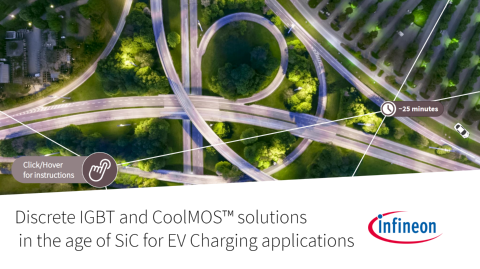
In this online course you will learn about cost-optimized, but highly efficient electric vehicles charging solutions based on IGBT and CoolMOS™, and explore Infineon’s wide portfolio that supports every segment of the EV charging application.
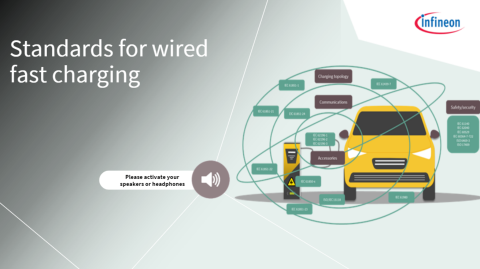
This training covers the most relevant standards for high power charger design, grouped into 4 major areas:
• charging topology
• communication
• accessories
• safety and security

- The training covers detailed information about Infineon's 3rd generation automotive EiceDRIVER™ 1EDI305xAS
- Participants will learn how these products help to reduce switching losses and improve thermal efficiency, resulting in longer range for hybrid and electric vehicles
Every switch needs a driver, and the right driver makes a difference.
Infineon offers different isoalted gate driver families, such as the EiceDRIVER™ Compact and the EiceDRIVER™ Enhanced. Each family has different features to protect the switch and application.
The EiceDRIVER™ isolated gate driver offers advanced features such as reinforced isolation, Miller clamp, slew rate control and short circuit protection to protect the switch and application. It also enables condition monitoring and rapid prototyping.
The EiceDRIVER™ is the perfect fit for industrial application, particular in combination with Infineon CoolSiC™ and IGBT switches.
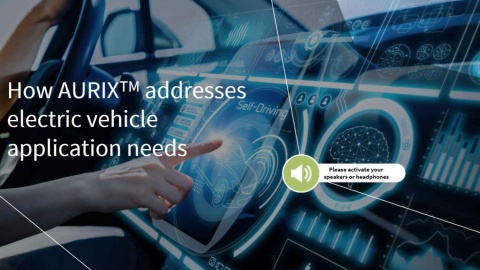
Training topics:
- Get to know how AURIXTM is able to answer the needs of the electric vehicle market
- Recognize and explore how AURIX™ TC3xx addresses key electric vehicle challenges, and understand the main features of the AURIX™ TC3xx microcontroller
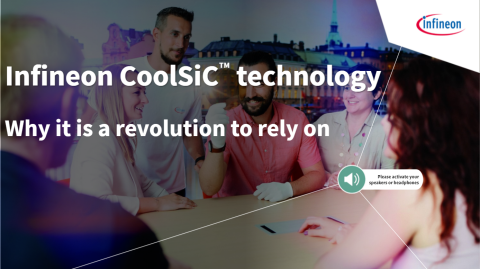
In this training you will:
- Be familiar with silicon carbide MOSFET structures and their characteristics
- Get to know Infineon's CoolSiC™ MOSFET, its features, its improvements over a typical trench MOS and how it performs against its competitors
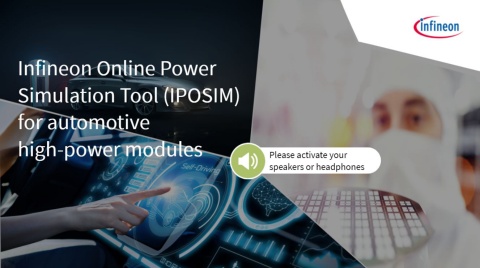
In this training you will:
- Get to know Infineon’s IPOSIM tool, specifically for an automotive electric vehicle inverter
- Discover the steps involved in simulating different parameters and comparing the results of different Infineon products to see which is the best fit for your application
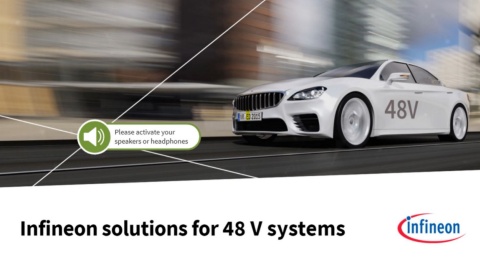
In this training you will:
- Learn about the transition from fule injection combustion engine to full battery electric vehicles and the main 48V powered applications.
- Additionally get an overview about Infineon’s comprehensive MOSFET portfolio for 48 V applications and their support material
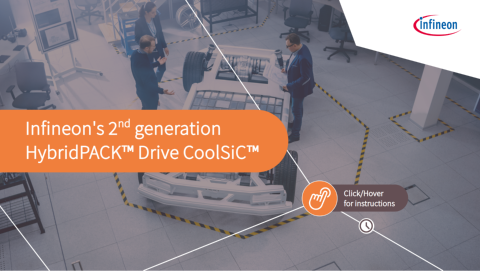
- Infineon's HybridPACK™ Drive silicon carbide compact power modules cater to the increasing demand for high range, efficiency, and power in electrified vehicles, enabling longer drive range, compact size, and optimized system cost.
- The second generation of Infineon's HybridPACK™ Drive, utilizing CoolSiC™ technology, offers a scalable product family with enhanced features and package improvements, providing added value to customers.

